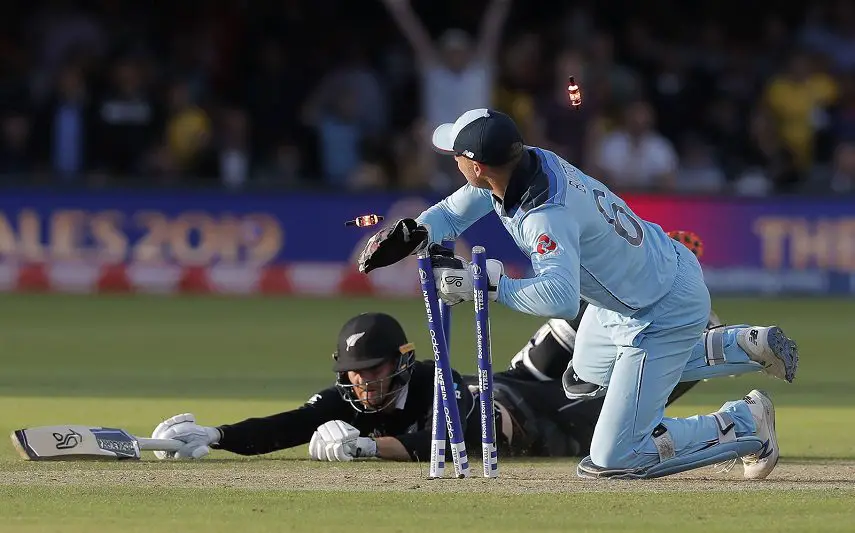Table of Contents
A wide in cricket is an illegal delivery, any bowler should avoid. In this guide I’ll explain what a wide is, together with the laws that are associated with it.
What is a Wide Ball in Cricket?
A wide is an illegal delivery that is out of a batsman’s reach. It is either too wide or too high to be hit, even with arms at full stretch and bat extended. Bowlers avoid wides, as they give the batting side an extra delivery and an additional run, while that run is debited to the bowling figures.
If the delivery is out of the batsman’s reach when he or she is standing in their normal stance, thus it is deemed to be wide, the umpire shall call ‘wide ball’ and motion to the scorers with the appropriate signal – both arms extended horizontally.

How to Judge a Wide Ball
In One Day cricket, professional umpires are assisted by the presence of two lines on the return crease. If the ball is delivered outside of those lines and the batter hasn’t changed their stance, the ball should be called as a wide.
If the batsman has moved towards the ball before it has been delivered, some leeway should be given to the bowler. In those instances, the umpire has to use their judgement and assess whether the batsman could have reached that delivery.
Similarly, in first class cricket, the umpire’s judgement comes into play. In this form of the game, the lines on the crease are not in play and wides are not judged so strictly. The umpire must therefore decide whether it’s reasonable to assume that the batsman could have reached the ball at all, even with the under edge of their bat.
Remember that in all cases, these laws apply to height as well as width.
Extras and Penalty Runs
If a wide is called by the umpire, one run will be added to the batting side’s total. This run is not credited to the batsman and it will be included under ‘extras’.
A wide is a bowling extra, as opposed to a fielding extra so that additional run will be debited to the bowler’s figures.
Getting Out on a Wide Ball
Batsmen would have to be very unlucky to be given out off a wide but this can happen. Certain types of dismissal, such as bowled, caught and LBW are taken out of the equation and the reasons for this should be obvious.
However, a batter can be dismissed from a wide delivery in the following ways:
- Stumped
- Run Out
- Hit Wicket
- Obstructing the Field
Closing Thoughts
Having recently studied stage one and two of the ECB’s umpiring course, I know that it’s vital to understand what constitutes a wide delivery for those who want to officiate in a game.
However, by taking this information on board, it can also help when you’re playing as a bowler or batter. Even if you simply watch cricket as a fan, this guide should help you to understand the laws.


